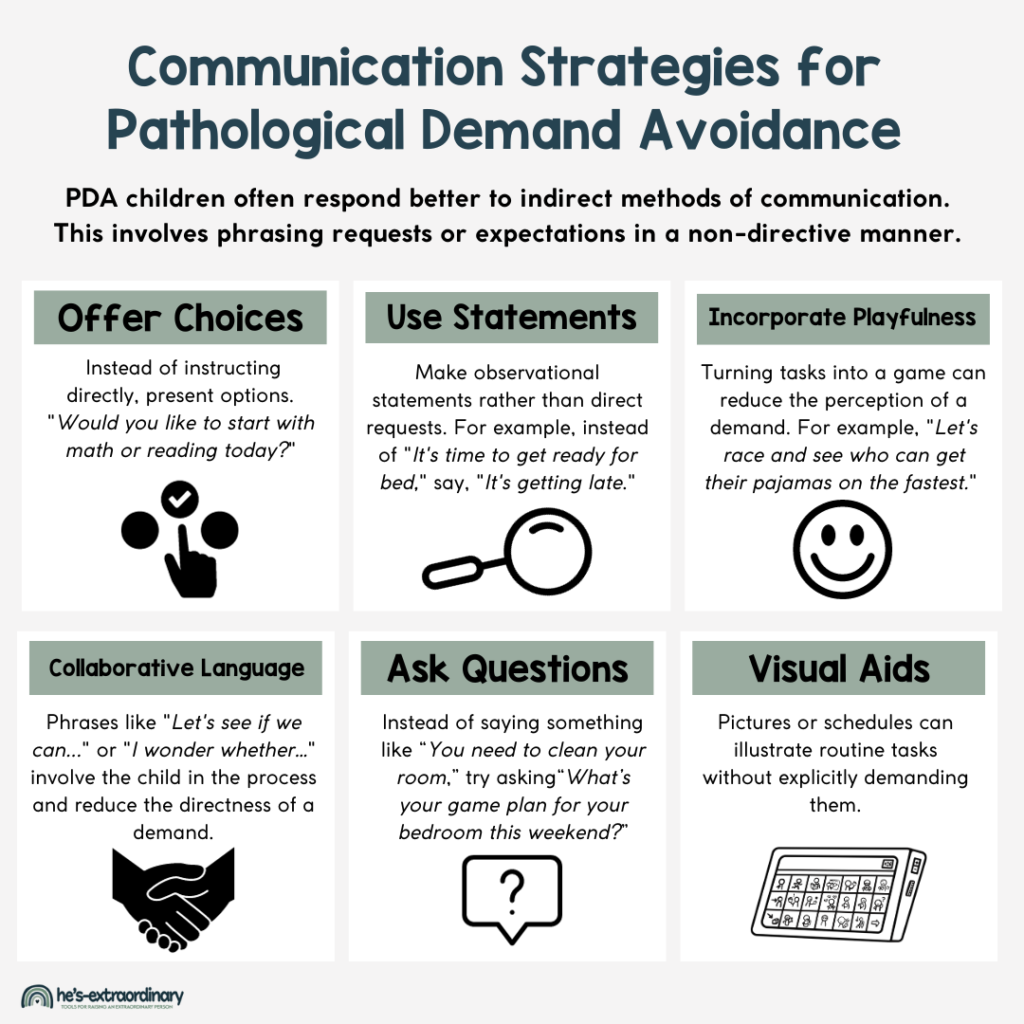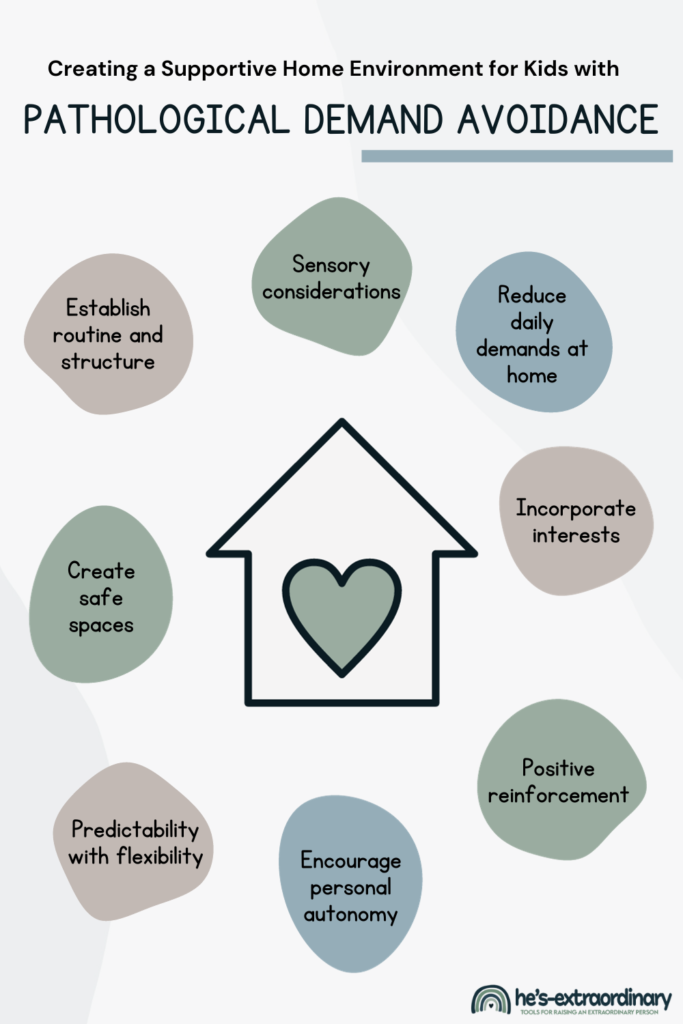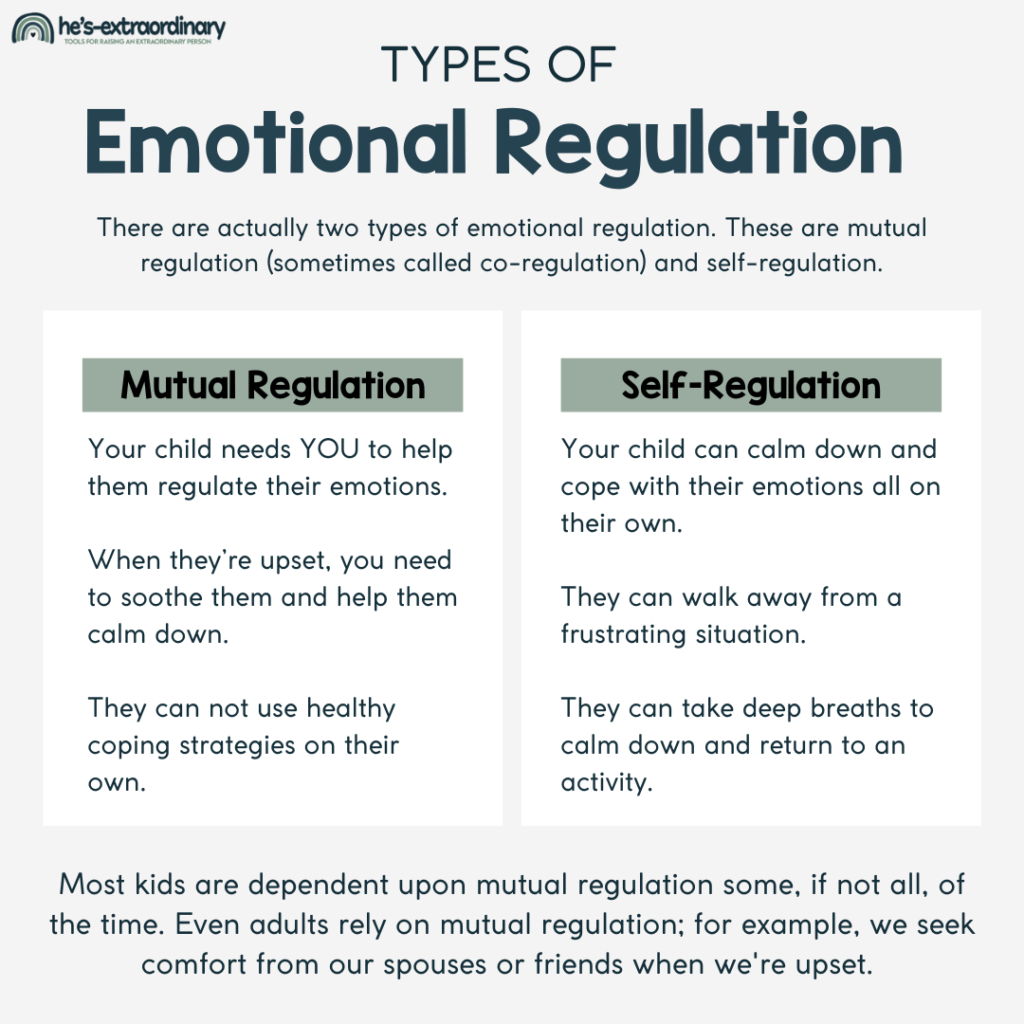15 Effective Parenting Strategies for Pathological Demand Avoidance
What’s inside this article: Practical advice and strategies for effectively managing behaviors associated with pathological demand avoidance (PDA). These strategies focus on long-term coping and social-emotional skill development and can help parents and educators build better relationships with children who have a PDA profile.
Disclaimer: This post contains affiliate links
Pathological Demand Avoidance (PDA) is a complex behavioral profile seen in individuals within the autism spectrum. It’s characterized by an intense avoidance of everyday demands and expectations. This leads to unique challenges at home and in social and educational settings.
It’s important to understand that anxiety and challenges with emotional regulation are the underlying causes of the difficult behavior you’ll see in kids with PDA.
That’s why understanding and managing PDA requires more than short-term solutions; it requires focusing on long-term coping strategies and developing social-emotional skills.
Understanding Pathological Demand Avoidance
Pathological Demand Avoidance (PDA) is a behavior profile believed to be part of the autism spectrum.
Children with pathological demand avoidance have the same challenges as others with ASD. This includes social communication difficulties, restrictive and repetitive behaviors, and sensory processing challenges.
However, people with PDA also display extreme avoidance of everyday demands and requests. This avoidance includes activities that are routine or even enjoyable for them.
If you’re looking to gain a better understanding of PDA, read Understanding Pathological Demand Avoidance: A Comprehensive Guide.
The Role of Anxiety in PDA Behaviors
Current research suggests that anxiety is the underlying cause of the behaviors seen in PDA.
It’s believed that the avoidance of demands often stems from deep-seated anxiety about expectations and the social environment, as well as extreme rigidity and intolerance for the unexpected.
This anxiety can manifest in a variety of ways, including:
- Resistance to Everyday Activities: This includes daily routines, chores, requests from parents and other authority figures, and even doing activities that the child finds fun and wants to do.
- Social Withdrawal or Manipulation: This includes avoidance techniques like distracting, withdrawing, negotiating, pretend play, affection, or direct refusal and arguing to avoid perceived demands.
- Emotional Outbursts: When other avoidance techniques are unsuccessful, your child’s behavior may escalate to a complete meltdown. This overwhelming emotional response isn’t a choice, but it does make it impossible for them to comply with a demand.
Understanding these aspects of PDA is crucial for parents and educators in identifying and supporting children with PDA effectively.
Effective Parenting Strategies for Pathological Demand Avoidance
All children with PDA are unique, so tailoring behavior strategies to your child’s individual needs and challenges is essential.
However, at its core, parenting strategies for kids with PDA involve building a collaborative relationship with your child. It’s better to focus on long-term coping abilities rather than short-term compliance.
You’ll want to reduce the perception of demands to reduce avoidant behavior while supporting your child’s social-emotional development and sensory needs.
When parenting a child with PDA, it’s helpful to focus on:
- Communication strategies that mask demands
- Creating a supportive home environment
- Use positive reinforcement
- Collaborative problem solving
- Building emotional regulation and coping skills
- Encouraging autonomy
- Managing transitions and changes
- Collaborating with your child’s school
- Seeking professional support when needed
1. Communication Strategies That Mask Demands
When you tell a child with PDA what they need to do, it triggers their demand avoidance. Your child will be more likely to cooperate if they don’t feel like you’re ordering them to do something.
Making small changes to how you phrase things can have a significant impact on how your child reacts to expectations.
PDA children often respond better to indirect methods of communication. This involves phrasing requests or expectations in a non-directive manner.
Try some of the following methods:
- Offer Choices: Instead of instructing directly, present options. “Would you like to start with math or reading today?”
- Use Statements: Make observational statements rather than direct requests. For example, instead of saying, “It’s time to get ready for bed,” say, “It’s getting late.” See if your child picks up on your cue and decides to get ready for bed on their own.
- Incorporate Playfulness: Turning tasks into a game can reduce the perception of a demand. For example, “Let’s race and see who can get their pajamas on the fastest.”
- Collaborative Language: Phrases like “Let’s see if we can…” or “I wonder whether…” involve the child in the process and reduce the directness of a demand.
- Ask Questions: Instead of saying something like “You need to clean your bedroom,” try asking a question, such as “What’s your game plan for your bedroom this weekend?”
- Utilize Visual Aids: Pictures or schedules can illustrate routine tasks without explicitly demanding them.

Avoid Triggers
- Identify and avoid any words or phrases that trigger resistance from your child. Some common trigger words include “must,” “should,” “have to,” and “now.”
- When setting expectations with your child, avoid showing signs of frustration or urgency with your tone of voice, as these often increase anxiety and resistance.
2. Creating a Supportive Home Environment
Creating a supportive home environment for children with Pathological Demand Avoidance (PDA) involves a balance of structure, predictability, and flexibility:
2.a. Establish Routine and Structure:
A structured home and a highly predictable routine help children feel secure and know what to expect. This reduces anxiety and provides a sense of security.
Children process information best visually and kinesthetically; therefore, the best way to add structure to your home is with simple visuals and consistent practice.
You can learn more about how to implement structure in your home here.
2.b. Predictability with Flexibility:
While a structured routine can provide a sense of security and order, being overly rigid can be counterproductive for children with PDA. It’s important for parents to observe their child’s mood and anxiety levels and be ready to adjust plans accordingly.
For instance, if your child seems particularly resistant one morning, you may modify their morning routine to reduce pressure, such as rearranging activities to better suit their current state or removing expectations that you know will be challenging.
For example, packing their lunch for them or asking if they’d like to wait to shower before bedtime.
This approach requires patience and understanding, but it can significantly reduce stress for both you and your child, leading to a more harmonious home environment.
2.c. Create Safe Spaces:
Create areas in the home where the child can retreat to feel safe and calm when overwhelmed.
This could be their bedroom, a calming corner, or a sensory room in the home where they’re free to go when needed. It’s best to avoid sending them to their safe space as a punishment.
This should be a space they want to go to when they need some extra time and space.
2.d. Reduce Daily Demands at Home:
Kids are bombarded with demands and expectations all day long at school and in other settings. Reducing the daily demands at home as much as possible can help them feel less overwhelmed.
There are several ways to reduce daily demands:
- Indirect Communication: Minimize the number of direct demands by using the indirect communication techniques mentioned above.
- Temporarily reduce expectations: When you notice cues that your child is stressed, temporarily scale back your expectations, allowing time and space for their nervous system to relax.
- Pick your battles: If you know everything you ask your child to do is going to be a challenge, carefully consider the importance of the request before making it. Some things are necessary and unavoidable, but some things can wait.
2.e. Incorporate Interests:
Incorporating a child’s interests into the home environment can be soothing and engaging for kids with pathological demange avoidance.
Identify activities, hobbies, or topics your child is passionate about and integrate these into daily routines and the home setting.
For example, if your child loves space, decorate their bedroom with stars and planets or have space-themed books and puzzles available in their calming corner.
This creates a comforting and familiar environment and also works as a motivational tool. Engaging in interest-based activities with your child can be a way to gently introduce or transition into more challenging tasks, reducing anxiety and resistance.
2.f. Encourage Personal Autonomy
Since it’s believed that pathological demand avoidance is driven by anxiety and the need to be in control, it makes sense that giving your child more control by encouraging personal autonomy is beneficial.
Your child should have as much freedom as possible to make their own choices.
In other words, never make a decision for your child that they’re capable of making for themselves.
For example, allow them to choose what to wear, what to pack in their lunch, what afterschool activities they want to join, etc.
If you find open choices are too much for them and lead to indecisiveness, instead offer several options. For example, set out 3 or 4 different types of juice, fruit, vegetables, snacks, etc, and let your child pack their lunch for school by picking one of each.
Your child will get better at making choices by having the opportunity to make their own decisions, not by being told what to do. Limitations to this strategy include situations where their choice could be harmful to themselves or someone else – health and safety are a priority.
2.g. Sensory Considerations:
Be mindful of your child’s sensory sensitivities and needs, and create a sensory-friendly home environment.
Some things to consider:
- Lighting: Use dimmer lights or softer lampshades to avoid harsh lighting, especially in areas where your child spends a lot of time.
- Noise Reduction: Create quiet zones in the home, use soundproofing materials, or provide noise-cancelling headphones, allow them to leave busy areas of the home to go to their safe spaces when needed.
- Tactile Comfort: Choose fabrics, especially for clothing and bedding, that are comfortable for your child, avoiding materials they find irritating.
- Stay Organized: Keep your home clutter-free and organized to reduce sensory overload. Clutter is visually stimulating and can cause overwhelm.
- Indoor Swings/Play Equipment: If your child is a sensory seeker, having an indoor swing, play equipment, or exercise equipment like an exercise ball or mini trampoline gives them a safe and non-disruptive way to meet these needs.
2.h. Positive Reinforcement:
Recognize and praise your child’s efforts and achievements, focusing on their positive behaviors. Children with PDA receive a lot of negative feedback every day, which can be incredibly damaging to their self-confidence.
Low self-esteem leads to additional challenges, such as:
- Negative self-talk and self-criticism.
- Avoidance of challenges or new experiences due to fear of failure.
- Difficulty handling constructive criticism.
- Persistent feelings of inadequacy or inferiority.
- Social withdrawal and limited interactions with peers.
Having low self-esteem may significantly worsen a PDA child’s avoidant behaviors.
Some tips for using positive reinforcement:
- Specific praise: Be specific about what the child did well. Instead of a generic “good job,” say, “I noticed you sharing with your friend today; that was very kind.”
- Immediate recognition: Offer praise immediately after the positive behavior to reinforce the connection.
- Celebrate effort, not just success: Acknowledge the effort put into a task, not just the outcome. This encourages trying and perseverance.
- Praise the behavior, even if there’s backtalk: Kids with PDA experience the urge to refuse almost all requests. So, if you ask your child to do something, and they say “No!” but they start doing the thing, give positive reinforcement. It can be tempting to focus on the negative and tell them not to give you an attitude, but, as the saying goes, actions speak louder than words, so focus on their actions.

3. Collaborative Problem Solving® (CPS)
Collaborative Problem Solving® (CPS) is an evidence-based approach proven to improve children’s behavior and reduce children’s emotional distress. CPS was developed at the Massachusetts General Hospital and is backed by over 25 years of research proving its efficacy.
With The Collaborative Problem-Solving approach, parents and children work together to identify problems leading to challenging behavior, share their thoughts and concerns, and then work together to find a solution that addresses both sets of concerns.
There is a specific, step-by-step process for using this approach. It takes practice, but it will come more naturally to you and your child over time.
You can learn more about collaborative problem-solving through the following books:
- The Explosive Child: The New Approach to Understanding and Parenting Easily Frustrated, Chronically Inflexible Children: This is an excellent read for parents. It thoroughly details how to use collaborative problem-solving with your child and offers relatable anecdotes and actionable advice so you can begin implementing this strategy immediately.
- Changeable: How Collaborative Problem-Solving Changes Lives at Home, at School, and at Work: This book can help you grow a deeper understanding of CPS and how it works. It goes into depth about the steps involved and how to implement them in all areas of your life.
- Treating Explosive Kids: The Collaborative Problem-Solving Approach: This book is a comprehensive guide to collaborative problem-solving written for clinicians. This book is advanced reading but provides a detailed framework for effective, individualized intervention with highly oppositional children and their families.
4. Building Emotional Regulation and Coping Skills
Emotional regulation and coping skills are vital for children with Pathological Demand Avoidance (PDA) due to their heightened experience of anxiety and stress in response to everyday demands.
These skills help them to:
- Manage anxiety
- Reduce meltdowns
- Improve social interactions
- Improve learning
- Foster greater independence
There are two forms of emotional regulation: mutual regulation and self-regulation.
Mutual regulation (or co-regulation) means your child needs you to help them regulate their emotions. You need to soothe and help them calm down when they’re upset. They can not use healthy coping strategies on their own.
Self-regulation means your child can calm down and cope with their emotions independently. They know a variety of healthy coping skills that work for them, and they’re able to use them.

It’s important to note that as adults, we still rely on mutual regulation often. When we feel upset, we seek comfort from our spouses, friends, and family. This is normal and healthy. But, ideally, we want our children to learn to manage minor day-to-day stressors on their own.
The following resources can help you teach emotional regulation and coping skills to your child:
- Social-Emotional Learning Begins at Home: Here’s How to Do it
- 120 Emotional Self-Regulation Ideas for Kids
- Kids Anger Management – How to Help Children Manage Their Anger
- The Connection Between Effortful Control and Emotional Regulation in Children
- Understanding and Coping with Feelings Printable Bundle
5. Managing Transitions and Change
Managing transitions and change is crucial for children with PDA due to their difficulty coping with unexpected situations and demands, which can trigger anxiety and resistance.
5.a. Preparing for and Handling Changes in Routine
Changes are hard for kids with PDA because any change, even a minor one, can make your child feel like they have no control over what’s happening to them, triggering stress and anxiety.
To help your child prepare for changes:
- Give Advance Notice: Inform the child about upcoming changes well in advance.
- Use Visual Schedules and Calendars: Use visual aids to help the child understand and prepare for changes. Maintain a calendar with upcoming events and appointments.
- Gradual Introduction: Slowly introduce new routines rather than making significant changes to their day all at once. Involve them in the process.
5.b Transitions
Transitions cause extreme anxiety for some children because of the need for sameness and because they feel like they have no control.
Transitions are changes from one thing to another. They may be big or small, from switching activities to moving to a different city and everything in between.
Strategies for smooth transitions:
- Use first-then statements
- Use visuals like a timer or a visual schedule
- Allow your child to bring along a comfort object
- Maintain consistent elements in both old and new routines.
- Practice upcoming changes in a safe, controlled environment.
- Provide emotional support and reassurance throughout the transition.
By effectively managing transitions, parents can help minimize stress and anxiety for their child, leading to a more positive and manageable experience.
For more detailed advice, read 8 Ways to Help Children Cope with Transitions Easily.
6. Work with Your Child’s School and Teachers
Working with your child’s school and teachers is key to creating a supportive educational environment for your PDA child.
You need to ensure they receive the right support and accommodations to ensure their academic success, and it’s helpful if their teachers learn more about pathological demand avoidance and how to support kids with PDA in their classrooms.
Tips for advocating for your child:
- Open Communication: Regularly communicate with teachers and support staff about your child’s needs and progress. It helps if you let them know if your child’s sleep or morning routine was interrupted so expectations can be adjusted at school if necessary.
- Educate the Educators: Provide information and resources about PDA to school staff. Some educators are more open-minded than others, but if possible, try to encourage a school-wide approach to understanding and supporting students with PDA.
- Participate in Planning: Be actively involved in developing Individualized Education Plans (IEPs) or a 504 Plan for your child.
7. Seek Professional Support for Your Child
If you’re noticing consistent patterns of demand avoidance in your child and it’s impacting their daily lives, you should consider seeking professional support.
How to Seek Help for Pathological Demand Avoidance:
- Consult a Pediatrician: Start with your child’s primary healthcare provider to discuss concerns and get referrals.
- Specialist Evaluation: Seek assessment from a child psychologist or a psychiatrist, especially those with experience in autism and pathological demand avoidance.
- Educational Assessment: Involving school psychologists or educational specialists can provide insights into how PDA affects learning and help the school develop an individual education plan.
- Comprehensive Approach: Often, adopting a multi-disciplinary approach involving different professionals is the best way to support your child.
When parenting a child with Pathological Demand Avoidance (PDA), key strategies include understanding PDA, creating a supportive environment, effective communication, collaborative problem-solving, and building emotional regulation and coping skills.
Building partnerships with educators and advocating for your child’s needs in school are also crucial.
Remember, each child is unique, and what works for one may not work for another. Patience and continuous learning are essential as you navigate this journey.
Embrace the challenges, celebrate the successes, and always remember that your efforts make a significant difference in your child’s life.

